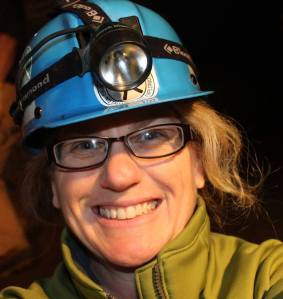This will be the first of several posts introducing the archaeologists that are involved with the MTSU Rutherford County Archaeology Research Program.
First up is Dr. Tanya M. Peres, Associate Professor of Anthropology and MTSU RCARP Director.
I received my BA (1995) and MA (1997) in Anthropology at Florida State University and my PhD (2001) in Anthropology from the University of Florida 2001. Immediately following graduation in August 2001, I moved to Lexington, Kentucky to work at the University of Kentucky. While there I was an Assistant Director of the Program for Archaeological Research and an Adjunct Assistant Professor in the Department of Anthropology at the University of Kentucky (2001-2005). I joined the Sociology and Anthropology faculty at Middle Tennessee State University in 2005, where I am currently an Associate Professor of Anthropology and Director of the Anthropology Program.
My research interests are concerned with the relationships between humans and their environments, and how these relationships impacted both the humans and other organisms around them in a variety of times and places. I have conducted extensive research on ancient environments in the southeastern United States, and at several sites in Gulf Coastal Mexico, Central Pacific Panama, and the Scottish Highlands. The goal of the 2010 NSF-funded field project that I co-directed, RAPID: Emergency Shoreline Assessment and Sampling of Archaeological Sites along the Cumberland River in Middle Tennessee, was to assess the natural and anthropogenic damage to archaeological sites along the middle Cumberland River following the May 2010 floods in Nashville, Tennessee. This grew into the MTSU Middle Cumberland Archaeology Project, which is an on-going collaboration between MTSU, the Tennessee Division of Archaeology, and several other local, state, and federal agencies, and private landowners to investigate and preserve ancient sites along the middle portion of the Cumberland River east and west of Nashville.
I have been the Project Zooarchaeologist of the Castalian Springs Archaeological Project, directed by Kevin E. Smith, since 2005. I have worked at a variety of sites across the Southeast while employed by private CRM firms, the University of Kentucky’s Program for Archaeological Research, and the National Park Service’s Southeastern Archeological Center. My publication record includes articles in Historical Archaeology, Tennessee Archaeology, and Current Research in the Pleistocene, as well as Integrating Zooarchaeology and Paleoethnobotany (co-edited with Amber VanDerwarker), Trends and Traditions in Southeastern Zooarchaeology, a guest co-edited issue of Tennessee Archaeology, numerous chapters in edited volumes, and as author or co-author of over 30 technical reports.
I have been the recipient of several research grants and awards from the Royal Society of Edinburgh International Scholar Exchange Fellowship, the Charles H. Fairbanks Award (University of Florida), a Smithsonian Tropical Research Institute Fellowship, National Science Foundation, and the Tennessee Historical Commission. In addition to being active in research and teaching I hold, or have held, positions in the Tennessee Council for Professional Archaeology, Kentucky Organization of Professional Archaeologists, Southeastern Archaeology Conference, and Society for American Archaeology.
I consider myself a third generation southeastern zooarchaeologist. I began my zooarchaeology career in 1994 as a student of Dr. Rochelle Marrinan at Florida State University (FSU). Dr. Marrinan (or Dr. M as we all refer to her) was a student of Dr. Elizabeth Wing at the University of Florida (UF) in the 1970s. During my years at FSU (where I received both a B.A. and M.A. in Anthropology) Dr. M. mentored and taught me, and scores of other undergraduate and graduate students, the rigors of taxonomic identifications and zooarchaeological data analyses and interpretations, just as she was mentored and taught by Dr. Wing. During that first zooarchaeology course we students were assigned our very own faunal assemblage to analyze. The assemblage was excavated in the 70s at the Snow Beach Site, a Swift Creek Period shell midden site. There came a point during the 1994 zooarchaeology course when a number of us had specimens that could not be identified using the comparative collection at FSU. The only thing we could do, and I am sure lobbied hard for, was to load up in Vanna White (FSU Anthropology’s white Chevy 12 passenger van) and head to the Florida Museum of Natural History at UF.
In 1997, after receiving an M.A. in Anthropology at FSU, I followed in Dr. M.’s footsteps and moved south to Gainesville to begin work toward a doctorate in Anthropology, emphasis Zooarchaeology, guided in part by Dr. Wing. While my actual dissertation focused on a site in Panama, I never strayed far from the Southeastern US. While in Panama I applied the field and lab methods I learned at FSU and UF to my PhD research of a Preceramic coastal shell midden. When analyzing the faunal assemblage for my dissertation I relied on the Zooarchaeology comparative collection and the expertise of Dr. Wing and Dr. Richard Cooke (Smithsonian Tropical Research Institute) to identify difficult specimens. During my tenure at UF I worked at the Florida Museum of Natural History on several faunal assemblages from southeastern projects including: Aucilla River Prehistory Project (Vertebrate Paleontology Range), Everglades National Park Environmental Reconstruction (EA Range), and Snake Island Zooarchaeological Analysis (EA Range).
I worked at the University of Kentucky as a Project Director, Zooarchaeologist, and Assistant Director of the Program for Archaeological Research for several years before coming to MTSU. I am so pleased to be a part of the MTSU community — I enjoy teaching and mentoring undergraduate students, and working with my very talented and supportive colleagues. I am excited about the Rutherford County Archaeology Research Program and the potential we have to learn about the prehistory of the county we call home.

